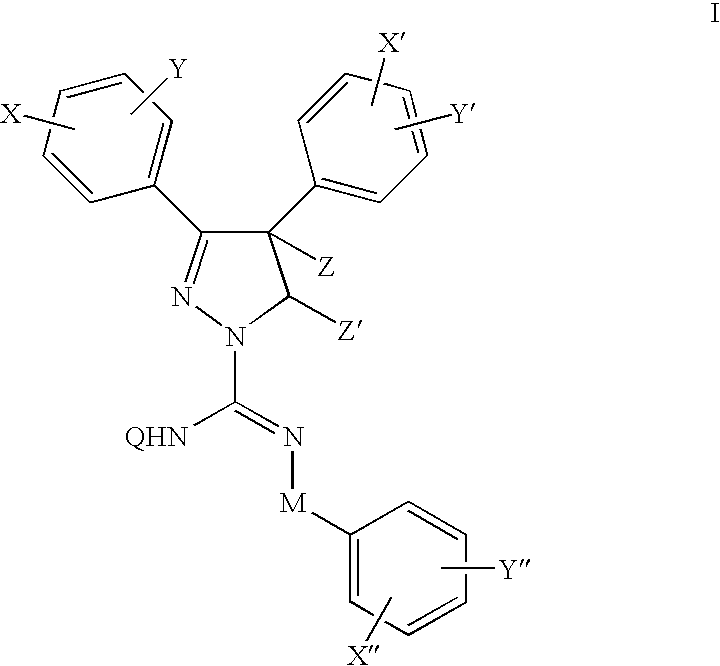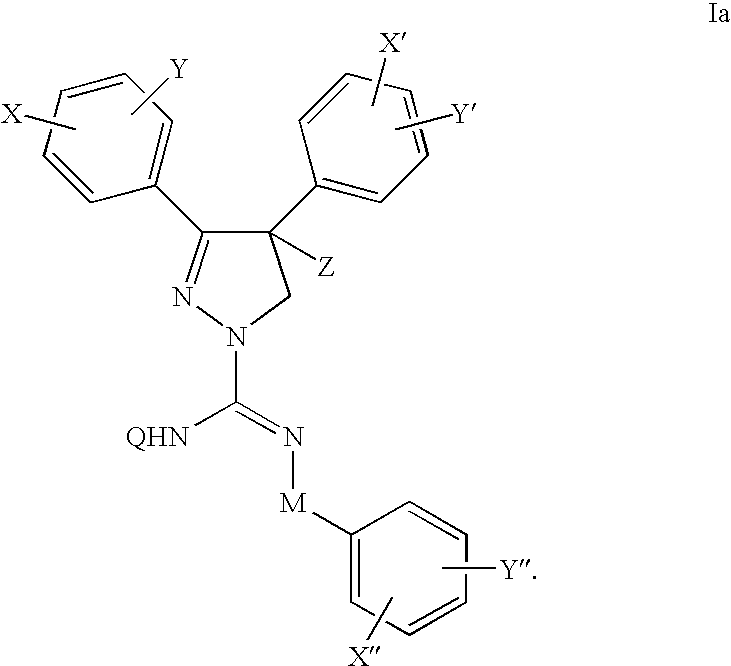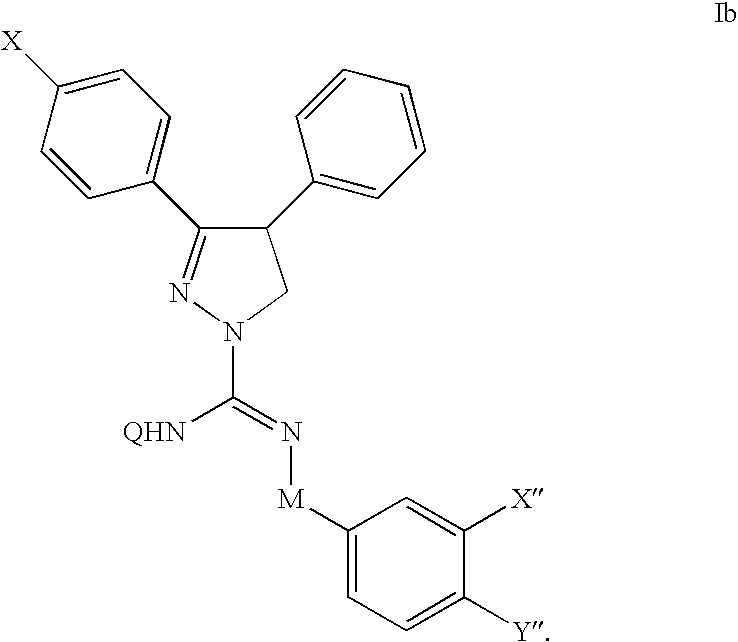Cannabinoid receptor antagonists/inverse agonists useful for treating metabolic disorders, including obesity and diabetes
a technology of cannabinoid receptors and inverse agonists, which is applied in the direction of biocide, drug composition, metabolic disorders, etc., can solve the problems of affecting the quality of life of patients, complicating treatment, and reducing the effect of treatment effect,
- Summary
- Abstract
- Description
- Claims
- Application Information
AI Technical Summary
Benefits of technology
Problems solved by technology
Method used
Image
Examples
example 1
[0183]To 10 mmoles of imidoyl chloride suspended in 20 mL of DCM was added dropwise to a cooled solution of 12 mmols of glycine methyl ester hydrochloride salt and 25 mmoles of TEA in 50 mL DCM, after the addition, the reaction mixture was allowed to warm to ambient temperature. After stirring for about one hour, the solvent was removed in vacuo and water (50 mL) was added and the mixture was extracted with EtOAc. The combined extracts were washed with brine, and then dried over anhydrous Na2SO4. After solvent removal in vacuo the residue was purified by silica gel column chromatogram (PE / EtOAc: 2 / 1) to afford the carboxamidine (50-80% yields).
example 2
[0184]Lithium hydroxide monohydrate (10 mmoles) and 5 mmoles of carboxamidine ester in THF (50 mL) and water (16 mL) was stirred at room temperature for 5-7 hrs. The pH of the solution was then adjusted to ˜1-2 by the addition of 1N HCl solution, and the solvent was removed under reduced pressure. Water (15 mL) was added to the residue which was then extracted with EtOAc. The combined extracts were washed with brine and dried over anhydrous Na2SO4. The carboxylic acid products (70-95% yields) were obtained by evaporation of the solvent in vacuo.
example 3
[0185]The carboxylic acids (1 mmol), obtained from the ester by the procedure described in Example 2, in 40 mL of dry DCM containing NMM (3 mmol) was cooled to about −15° C. with a salt ice bath. A solution of IBCF (1.1 mmol) in dry DCM (20 mL) was added dropwise over a 5 min period and after stirring for 20 mins in an ice-brine bath, dry ammonia / THF solution was added in one portion, and the reaction mixture was then allowed to slowly warm to rt where it was stirred for 20 mins. The solvent was removed by evaporation, and the residue was diluted with 20 mL of water and extracted with EtOAc. The combined extracts were washed with 15 mL of 1N HCl solution and 30 mL of brine, and then dried over anhydrous Na2SO4. After filtration of the solution and removal of the solvent in vacuo, the residue was purified by silica gel chromatography to give the carboxamide adduct (60-80% yields).
[0186]
TABLE ANumberQY″X″XNMR ppm1CH(CH3)CH2CO2Et4-ClHCl(CDCl3)1.28, 3H, dq, Me1.35, 3H, dd, Me2.65, 2H, d...
PUM
| Property | Measurement | Unit |
|---|---|---|
| temperature | aaaaa | aaaaa |
| temperature | aaaaa | aaaaa |
| width | aaaaa | aaaaa |
Abstract
Description
Claims
Application Information
 Login to View More
Login to View More - R&D
- Intellectual Property
- Life Sciences
- Materials
- Tech Scout
- Unparalleled Data Quality
- Higher Quality Content
- 60% Fewer Hallucinations
Browse by: Latest US Patents, China's latest patents, Technical Efficacy Thesaurus, Application Domain, Technology Topic, Popular Technical Reports.
© 2025 PatSnap. All rights reserved.Legal|Privacy policy|Modern Slavery Act Transparency Statement|Sitemap|About US| Contact US: help@patsnap.com



